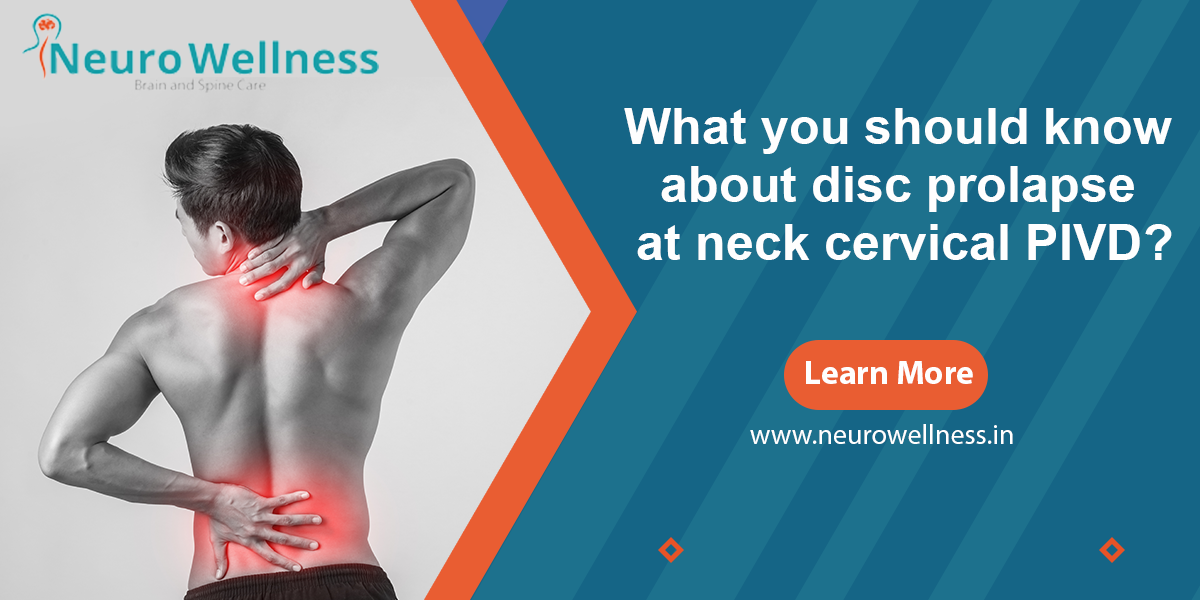When you feel discomfort for long period in your neck or upper back that you have never felt before, you might have a herniated cervical disc.
While it can sound worrying, it is not an unusual health condition as you age. In fact, you might not even know you have one if you do not have any symptoms.
Spine and cervical discs:
It will help if you first understand your spine, how it is built and where your cervical discs are located.
Vertebrae are the bones that make up your spinal column. They keep you on your feet. They also protect and surround your spinal cord, which resembles a tube with a fluid-filled centre. It runs from the top of your head to the bottom of your spine.
Discs are spongy cushions that sit between the vertebrae. They serve as shock absorbers for your everyday motions, as well as leaping, jogging and other activities that cause your body to wear out.
From top to bottom, your spine is divided into three primary segments:
- Cervical
- Thoracic
- Lumbar
The cervical vertebrae are the top seven vertebrae in your spine. Nerves that connect your arms, hands and upper body are found in the cervical portion of your spinal cord.
The cervical vertebrae are cushioned by cervical discs. They also allow you to bend and twist your neck and back by connecting the vertebrae to one another.
Meaning of ‘herniated’:
A gel-like substance is seen in the core of the discs between the vertebrae. A disk’s outer layer is made up of fibrous cartilage, which keeps the gel confined.
The gel can poke out if the outer section tears or cracks. This is what it means for a disc to be herniated.
A “ruptured disc” or a “slipped disc” is another name for a herniated disc. It is similar to a jelly doughnut with the filling squirted out.
How does a cervical disc herniate?
The cervical spine has six intervertebral discs. Each cervical disc cushions the vertebral bodies and helps disperse loads from the neck and head above by sitting between neighbouring vertebrae (one above and one below). A disc is made up of two basic components:
- Annulus fibrosus: it is a type of fibrosus. The disc’s outer layer is made up of concentric collagen fibres, making it robust enough to protect the disc’s fragile inner layer. The annulus fibrosus aids in the handling of large loads and shock absorption in the spine.
- Nucleus pulposus: the inside of the annulus fibrosus is made up of a loose network of fibres suspended in microprotein gel and protected by the annulus fibrosus. The nucleus pulposus adds to the cushioning and flexibility of the movements.
- most common cervical disc to herniate is C5C6 followed by C6C7.
Causes of herniated cervical disc:
It can be difficult to pinpoint the exact cause of a herniated cervical disc. It usually starts slowly and has no obvious cause. However, the reason can occasionally be narrowed down to:
- Age: because of wear and strain, a disc may be more prone to herniation. Our discs contain a lot of water when we are young. However, as we age, the amount of water content reduces. When the discs have less water in them, they become less flexible. As a result, the risk of it rupturing or herniating increases when you move, twist or turn. They can rupture with less force in older people.
- Genetics: herniated discs can also be passed down through families
- Movement: one can be cause by sudden, jarring motions
- Sudden strain: a disc can be damaged if you lift a large object or turn or rotate your upper body too quickly
Symptoms of herniated cervical disc:
One of the most prevalent reasons for neck pain is herniated cervical disc. Other symptoms that may occur if the disc is pressing on a nerve root include:
- Numbness or tingling in the shoulder or arm, which may extend to the fingers
- A Hand or arm that is weak .
If it presses against your spinal cord, you may experience more severe symptoms such as:
- Walking with stumbling or awkwardly
- Tingling or a jolting sensation travelling down your spine and into your legs
- Problems with fine motor skills when using your hands and arms
- Loss of coordination and balance.
Summary:
Herniated discs are frequent ,treatment is based on degree of herniation and clinical presentation of patients. Herniated discs are more common in people after 50 year, but it can occur in 30s also. You should consider consult Neurosurgeon in Bangalore or visit the Neuro Wellness care centre which is a Bangalore Spine Specialist Clinic and provides the best and cost effective treatment for spine related problems and Back Pain Treatment in Bangalore.

